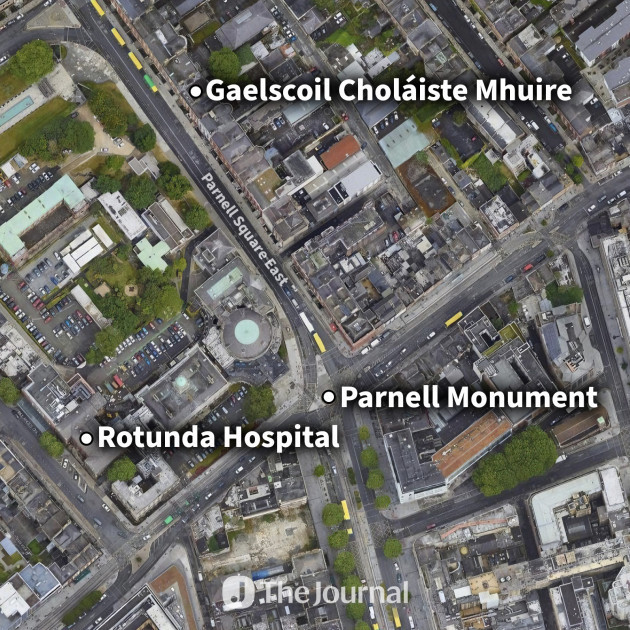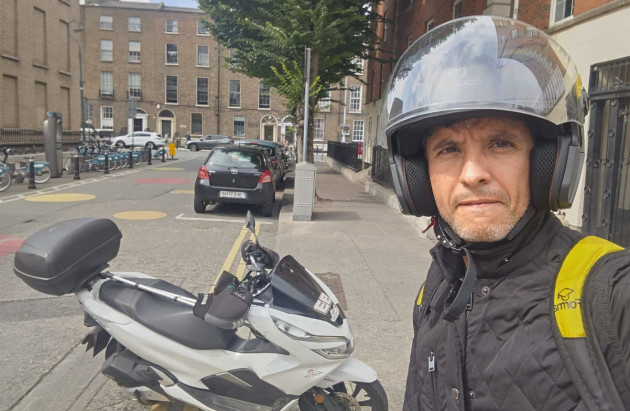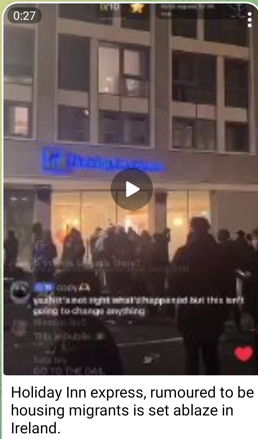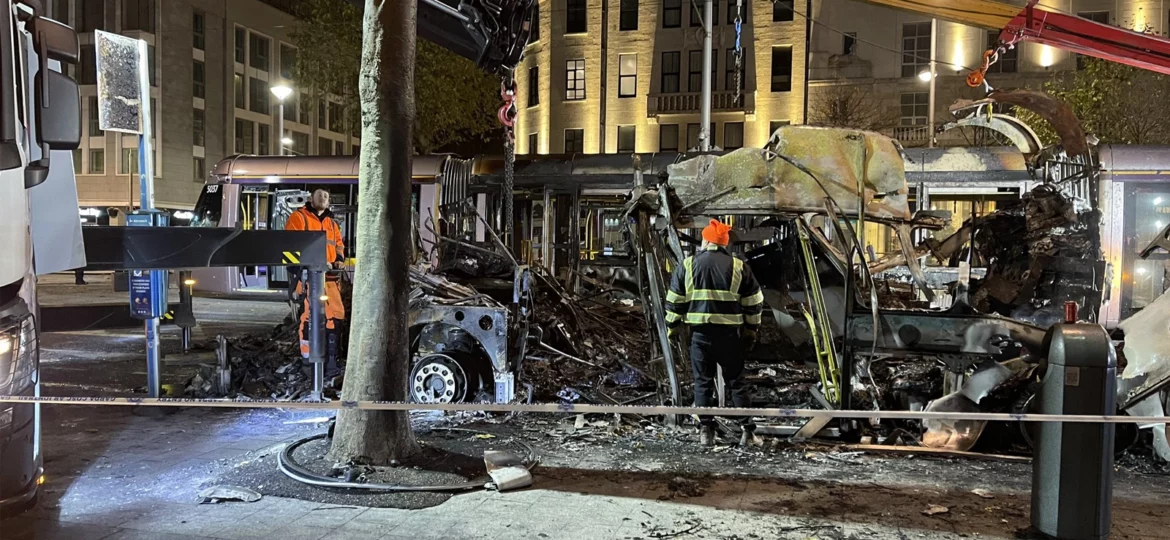What happened in Ireland on the 23rd of November is the umpteenth warning that disinformation can have appalling consequences in real life. A shameful script that so many times in the past brought tragedy in Europe was played out again in Dublin a few nights ago: a dramatic news story circulates, disinformation and racism jump on it spreading baseless accusations against an entire minority group, hungry mobs take to the streets and the violence begins. And like always in the past, disinformation and racism paved the way for this outburst of hate for months beforehand, hammering conspiracy theories and false news, fueling resentment in the public opinion (see the EDMO briefs, for example here, here and here).
The following is an edited version of the article from The Journal – a prominent Irish online news website whose fact-checking unit is a member of the EDMO fact-checking network – about what happened in Dublin.
———-—————————————————————————————————————–
PEOPLE IN IRELAND and beyond watched in shock as violent scenes unfolded in Dublin city on Thursday night – first a horrific stabbing, then rioting in the streets.
But what exactly happened and how did the situation escalate?
To understand that, we have to explore both what happened on Thursday and also what has been happening online in the months preceding it in terms of anti-immigration rhetoric.
Shortly after 1.30pm on Thursday there were reports of a serious assault near a school in Dublin city at Parnell Square East, a busy transit route that runs through the north of the city centre and onto O’Connell Street, Dublin’s most well-known street.
It soon emerged that three children and two adults, including the attacker, were injured in the incident.
A five-year-old girl remains in a critical condition in hospital. A woman in her 30s, who works in childcare and was minding the children, remains in a serious condition in the Mater Hospital.
Security sources currently believe the stabbing incident was a random attack, but gardaí [the Irish national police – Ed.] continue to investigate if the attacker had any connection with the injured people or with the school.
The Journal has confirmed with sources that the alleged attacker is an Irish citizen, originally from Algeria, and living in Ireland for 20 years.
The suspect remains in hospital today with gardaí present.
Taoiseach [the Irish prime minister – Ed.] Leo Varadkar condemned the riots saying: “Those involved brought shame on Dublin, brought shame on Ireland and brought shame on their families and themselves.”
Timeline of events
The stabbing attack happened as junior and senior infant children from Gaelscoil Choláiste Mhuire were being lined up to go to a nearby crèche for an after-school club at around 1.30pm on Thursday.
A large number of emergency services personnel – gardaí, paramedics and Dublin Fire Brigade – were soon at the scene, and part of the road was closed off.

A large crowd of people started to gather at the scene, including concerned parents and grandparents.
The Journal spoke with one woman who had collected her five-year-old granddaughter from the school minutes before the incident happened.
“It’s her classmates. I’m just in shock. I just hope the kids are alright, and the teachers. They’re not letting us know anything. We’re hearing all different stories.
“The principal said [the attacker] started slashing the knife … at the kids. That’s all I know. I didn’t see it happen.”
A number of passers-by intervened to subdue the attacker and prevent him from injuring anyone else. A Brazilian Deliveroo driver, Caio Benicio, who is a 43-year-old father-of-two, told The Journal how he saw the incident unfolding, got off his motorbike, and used his helmet to hit the attacker and stop the attack.

Misinformation and anti-immigrant rhetoric
When gardaí and other frontline workers were dealing with the stabbing and its aftermath, many people started to discuss the unfolding events online.
As is often the case with a breaking news story, many rumours gained traction before the truth had time to emerge.
In the immediate aftermath of the attack there was a lot of information being shared online – about who the attacker was, the motive and the response of authorities – some of it was true, some of it was not.
A senior Government source quickly stated that the incident was not believed to be terror-related, despite speculation to the contrary. This fact was confirmed at a garda press briefing on Thursday.
Much of the conversation online related to the attacker’s nationality and motive.
The online commentary in the next few hours followed a tried and tested pattern equal parts predictable and toxic.
Anti-immigration rhetoric has been gaining support in recent months – something that was undeniable at violent protests outside the Irish parliament at Leinster House back in September.
Prior to that particular protest, organisers of the protest used hashtags like #IrelandIsFull and #EnoughIsEnough. The same hashtags were widely used on Thursday night.
The senseless and horrific murder of Ashling Murphy in January 2022 was invoked almost immediately to put forward an anti-immigrant sentiment, including by high-profile figures such as MMA fighter Conor McGregor.
Ashling’s killer, Jozef Puska, is originally from Slovakia.
That particular attack was also deemed to be random, despite much speculation that Puska had known Ashling and targeted her.
Irish people and immigrants alike condemned her murder as a heinous crime. Her killing led to a wider conversation about women’s safety in Ireland.
Since 1996, 264 women have died violently in the Republic of Ireland. Of the women that were killed, 63% were killed in their own homes, 55% of legally resolved cases were killed by a partner or ex-partner, and almost nine in 10 women knew their killer.
‘Traitors’
There are a number of high-profile accounts online that routinely share misinformation about immigration and, at times, very openly discuss their hatred of foreigners – seemingly blaming them for anything that goes wrong in Irish society.
Gardaí, politicians and the media are regularly labelled ‘traitors’.
The fact that the suspect in Thursday’s stabbing attack originally came from Algeria, despite being an Irish citizen for many years, was apparently proof that immigrants need to be deported or – according to some posts – attacked and killed.
The fact that the man who intervened and stopped the attack was a foreigner, from Brazil, seemed to be less important. Although, some people posted online about how Brazilians are ‘good’ immigrants who ‘give back’ to Irish society.
Several members of the medical teams treating those injured in Thursday’s attack are also immigrants.
‘Blood on the streets’
A number of social media posts incorrectly referred to the attacker as an “illegal immigrant”. Under one Facebook post about the stabbing, commenters said it was “reported” that the suspect was Romanian.
When one person said it wasn’t clear from the video alone if the suspect was Irish, they were told: “It’s idiots like you who have the blood of Irish children on the streets.”
Certain accounts were encouraging people to go to the city centre and attack gardaí, immigrants and politicians.
One voice note that was widely shared on messaging apps Telegram and WhatsApp encouraged people to kill any foreigners they met.
While some people who engaged in Thursday’s riots were opportunists, it’s clear others who came into the city centre were intent on violence.

Leo Varadkar’s address and a photo of his house were also widely shared online. As highlighted by certain social media posts, some people were planning to march from the city centre to his home.
A spokesperson for the National Party, a minor far-right political party which has no elected representative, wrote on Facebook that Dublin “has just got it’s latest does of Multiculturalism [sic]” after the stabbing.
“Every single plantation centre in Ireland needs to be shut immediately and every single occupant deported,” they added.
Racist tropes
Conspiracy-minded groups often use the phrase ‘the Great Plantation’ to refer to a plan to replace Irish people with foreign people.
A ‘plantation centre’ may refer to Direct Provision centres which house asylum seekers, even though the suspect was not a resident of one.
Some messages being shared last night encouraged people to target Direct Provision centres and other buildings housing international protection applicants.
One post said: “Enough is enough. Are you happy to sit and watch Irish children stabbed, or will you man up, and fight back?”
The Holiday Inn Express on Cathal Brugha Street was set ablaze by vandals because they believed immigrants were inside. Luckily, no one at the hotel was injured.

Justin Barret – who still considers himself the rightful leader of the National Party, despite being removed from the role following a dispute involving €400,000 worth of gold – shared messages about the protests to his Telegram that read: “1000 people are already at the spire. All hands on deck. Defend our kids.”
He later added: “I want the storm to break loose!”
Other anti-immigration groups echoed similar sentiments.
Derek Blighe, the leader of the anti-immigrant Ireland First political party said on Telegram: “Your children are in mortal danger, and the Irish government are responsible.
“These people should not be in our country. You need to wake up, you need to get on your feet, you need to mobilise.”
Blighe later shared a headline from the conservative media site Gript which said it had confirmed that the stabbing suspect was understood to be an “Algerian national”. Below the screenshot, Blighe wrote: “A fakeugee” (i.e. a ‘fake refugee’).
Blighe later shared the false rumour that the girl who was attacked had died shortly afterwards in a YouTube livestream of an anti-immigrant protest in Fermoy.
That same rumour was shared widely in the aftermath of the stabbing, including by Philip Dwyer, an anti-immigrant activist who has been sharing antisemitic content since the start of the conflict between Israel and Hamas.
“This part of Dublin is practically overrun with non-Irish people, foreigners,” Dwyer said in a livestream on X, formerly Twitter, after he travelled to Dublin to join protestors who had gathered at the Spire.
Dwyer later livestreamed the riots and the burning of vehicles while delivering long monologues on migration and how “lunatics are being let in without any vetting”.
A livestream, viewed by more than 130,000 people, featured Dwyer erroneously saying multiple times that it was “confirmed” that one of the children had been killed.
The media was also quickly blamed – both for not covering the story by commentators online, and for covering it by people at the scene.
One video from the scene showed a journalist being harassed, accused of calling some of the rioters far-right.
This footage was shared by Irish antisemitic commentator Keith Woods, who wrote: “Liberal Irish journalist who smears opponents of mass-immigration as “far fight” gets sent on his bike by local after showing up to the site of a stabbing spree today.”
That post would later be retweeted by McGregor, who wrote: “In a war you are nothing. We are not backing down, we are only warming up. There will be no backing down until real change is implemented for the safety of our nation.
“We are not losing any more of our women and children to sick and twisted people who should not even be in Ireland in the first place”.
At the time of publication, both posts had been viewed more than 13 million times each, so 27 million times in total.
In a post shared on Friday, McGregor said he did not “condone” last night’s riots but understood people’s “frustrations”.
Defence Forces
There were also several incorrect reports that the Defence Forces had deployed vehicles on the streets of Dublin, but this was confirmed to be false.
This information was also reported by a number of media outlets, including BBC News, who later corrected the error.
In a post on X, formerly Twitter, the Defence Forces said that images being shared online were not taken on Thursday and had no connection to the riots.
“We ask everyone to be sensitive to the spreading disinformation, and to take care.”
The Taoiseach said the Government will “modernise our laws against incitement to hatred and hatred in general”, on foot of the riots.
“That is more required than was ever the case before,” Varadkar added.
In recent months there has been criticism of what some people view as a relative ‘hands-off’ approach by gardaí to far-right protests.
A senior garda source today told The Journal that Thursday’s events will lead to a major change in approach.
“There will be a change coming. There has been a lot of advocating for a more robust approach for a long time now at all ranks. This is likely to change the garda approach and the response will be an awful lot more robust,” the source said.
How tensions escalated
As misinformation spread online, tensions at the scene of the attack of the stabbing quickly escalated.
A group of people approached the garda cordon and some started to shout insults and throw items such as bottles.
“You should be f*cking ashamed of yourselves,” one man shouted.
This group slowly began to grow in numbers to between 30 and 40 people.
The crowd started to block traffic – first westbound on Parnell Street, then the Luas line, then northbound O’Connell Street – by standing in front of buses, trams and cars from around 4.30pm.
Two tricolours were also draped over the windscreen of a stopped Dublin Bus.
The crowd swelled in numbers soon afterwards, growing much larger in and around O’Connell Street. Some people started to throw fireworks and other objects at gardaí.
After 6pm, rioters had set a garda car on fire. The situation then spiralled further – a number of cars, buses and a Luas tram were set alight, resulting in public transport being suspended in the city.
This included a Dublin Bus on O’Connell Street bridge, which became the focal point of the riot for a time.
A number of events due to take place in the city were cancelled or finished early due to the riots.
Some employees were unable to leave their places of work due to safety concerns, remaining inside offices and shops for a number of hours.
The Rotunda advised patients to not attend the maternity hospital “unless absolutely necessary” on Thursday, but services there have since returned to normal.
During the unrest, some rioters started to break into shops such as Foot Locker and the Asics shoe shop on O’Connell Street. Many members of the crowd followed them in and left the shops carrying armfuls of clothing, some throwing them in the air.
The atmosphere in the crowd was frantic at times. There were frequent bangs as fireworks were being set off, a reporter from The Journal at the scene witnessed.
After one particularly loud bang, the crowd panicked, and many onlookers started to flee away from the scene.
The looting then spread with rioters gaining access to Arnotts department store on Abbey Street, where a number of staff were left trapped, while others moved down Henry Street.
By 8pm riot police were moving down O’Connell Street, at times charging.
After this area was cleared, rioting continued in the southside of the city with the windows of some businesses damaged, and riot police were also deployed there.
Garda backup
As gardaí in the city centre struggled to deal with the scale of violence and unrest, urgent messages were sent to members of An Garda Síochána in Dublin and other counties calling for backup.
The gardaí stayed in various locations, on both sides of the River Liffey, until around 3am when “stand down” orders were given.
Since the riots, more than 30 people have appeared in court charged in connection with what happened on the streets of Dublin. More are expected to be charged in the coming days.
Photo: Nicky Ryan, The Journal
